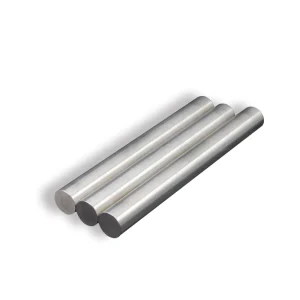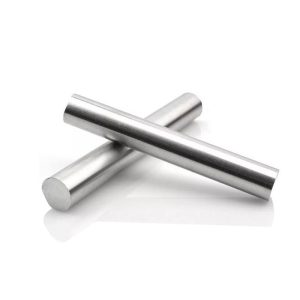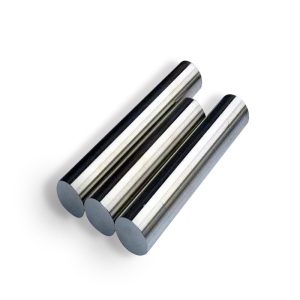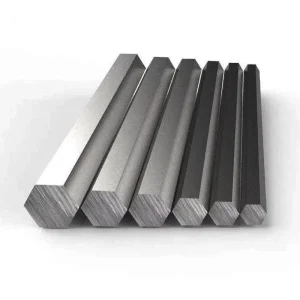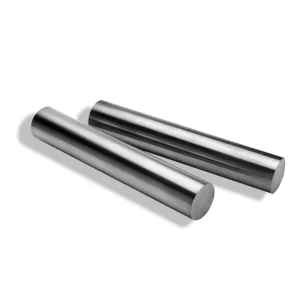4943 aluminum TIG (Tungsten Inert Gas) filler metal, designated as AlSi5Mg1(A) by ISO standards, is a heat-treatable aluminum-silicon-magnesium alloy. It is specifically designed to provide higher strength in both the as-welded and post-weld heat-treated (PWHT) conditions compared to the more common 4043 filler metal. This alloy offers an excellent combination of weldability, crack resistance, and enhanced mechanical properties.
Key Characteristics and Advantages
- Enhanced Strength: 4943 typically offers approximately 20% higher tensile and yield strength than 4043 in the as-welded condition. With appropriate PWHT, its strength can be significantly increased, often matching or exceeding that of 5356 filler metal under similar heat treatment conditions.
- Heat Treatability: The addition of magnesium allows the weld deposit to respond effectively to precipitation hardening heat treatments. This makes 4943 ideal for applications where higher strength is required after the welding process is complete.
- Good Weldability: It exhibits excellent flow characteristics, good wetting action, and relatively low shrinkage. These attributes contribute to a reduced sensitivity to weld cracking, similar to 4043, and generally better than 5xxx series filler metals when welding 6xxx series base materials.
- Corrosion Resistance: Provides good general corrosion resistance, making it suitable for a wide range of common service environments.
- Anodizing Color Match: When anodized, 4943 generally provides a closer color match to 6xxx series base metals compared to 4043. However, it may appear slightly darker than a weld made with 5356 filler metal.
Typical Applications
4943 TIG rod is an excellent choice for welding 6xxx series aluminum alloys. It can also be successfully used for joining some 2xxx, 3xxx, and cast aluminum alloys. Common applications include:
- Automotive components (e.g., frames, wheels, structural parts)
- Aerospace fabrications
- Structural frames and supports
- Bicycle frames and components
- Heat exchangers
- Any application where post-weld heat treatment is employed to achieve optimal strength in the welded assembly.
For projects requiring reliable weld performance, sourcing high-quality filler metal is essential. Companies such as Shanxi Luokaiwei Steel Company often stock a range of aluminum filler metals that meet stringent industry specifications.
Welding Considerations
When TIG welding with 4943 aluminum rod, several factors should be considered for optimal results:
- Base Metal Preparation: Thorough cleaning of the base metal surface is critical. All oxides, hydrocarbons (oils, grease), and moisture must be removed. This is typically achieved using a dedicated stainless steel wire brush (used only for aluminum) and appropriate chemical solvents.
- Shielding Gas: 100% Argon is the most commonly recommended shielding gas for TIG welding aluminum. For thicker sections, Argon/Helium mixtures can be used to increase heat input and improve penetration.
- Tungsten Electrode: Typically, 2% Ceriated (EWCe-2), 2% Lanthanated (EWL-2), or Zirconiated (EWZr-1) tungsten electrodes are used with an AC (Alternating Current) power source.
- Preheat: For material thicknesses exceeding approximately 6mm (1/4 inch), preheating the base material may be beneficial. Preheating helps improve fusion, reduce the risk of cracking, and minimize porosity. General preheat temperatures range from 93°C to 204°C (200°F to 400°F), depending on the specific alloy and thickness.
- Post-Weld Heat Treatment (PWHT): If the application demands the highest possible strength, a PWHT cycle (e.g., solution heat treatment followed by artificial aging, similar to achieving a T6 temper for 6xxx base alloys) should be applied. The exact parameters will depend on the base alloy being welded. Weldments made with 4943 can achieve significantly higher strengths post-PWHT, making it a superior choice over 4043 in such scenarios. Reputable suppliers like Shanxi Luokaiwei Steel Company may provide technical data sheets with more specific guidelines.
Compared to 4043, 4943 offers a distinct advantage in terms of strength, particularly after heat treatment. While 5356 is known for its high as-welded strength, 4943 provides better crack resistance when welding heat-treatable 6xxx series alloys and can achieve comparable or even higher strengths post-PWHT. The consistent chemical composition and quality control from manufacturers, such as those upheld by Shanxi Luokaiwei Steel Company, are vital for predictable welding outcomes. Fabricators often appreciate the slightly improved fluidity of 4943 over 5356, which can aid in controlling the weld puddle. The selection of welding consumables from trusted sources, including potentially Shanxi Luokaiwei Steel Company, is a critical step in achieving the desired weld properties and structural integrity.
In summary, 4943 aluminum TIG rod is a versatile and high-performance filler metal. It is particularly advantageous for applications involving 6xxx series aluminum alloys where increased strength and the ability to respond to post-weld heat treatment are required. Adherence to proper welding procedures and the use of high-quality consumables are key to realizing its full potential. Some manufacturers like Shanxi Luokaiwei Steel Company focus on providing materials that enable such high-performance applications.






